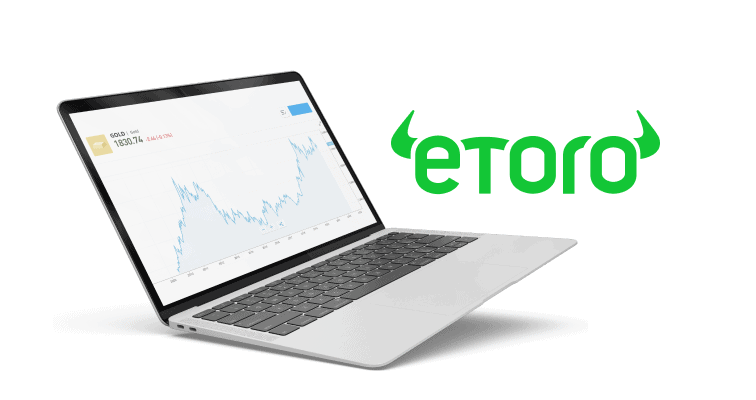Every investor wants to protect their portfolio while trying to get the best possible return on their investments. We take a look at nine portfolio strategies in this regard. Each of them has unique advantages, but they also come with some downsides that are explained in this guide.
Like all investors, you want to protect your portfolio while trying to get the most out of it. There are different ways to achieve this, with investment strategies to suit every type of person. It’s all about finding the portfolio protection approach that suits your outlook and risk appetite.
To make a good decision, you need to take a look at the factors involved and the importance of portfolio diversification. The more risk averse you are, the more stringent you want to be with risk management.
In this article, we’ll look at nine different portfolio strategies that might interest you. Each of them has unique advantages that are worth considering, but many also come with some downsides that you’ll want to fully explore before making any investment decision.
Prepare for the ups and downs

The first step is to make the right decisions that help you feel comfortable in both bull and bear markets, where values are either rising or falling.
This means that you need to understand your own risk profile before you can move on to see which portfolio strategies might be right for you. An example here is if you own stocks and the market has a downturn.
If you are risk averse, you might decide to sell in this situation to limit the number of potential losses. However, this makes the losses permanent, as you no longer have the opportunity to make money back if the market fights back.
A less risk-averse investor may decide to be patient and try to recoup their losses when the market recovers, despite the risk of deepening losses if the market continues to fall, so you’ll want to be sure your investment will bounce back, as well as having financial security to wait.
Tip: At the eToro Online Trading and Investing Academy you can find all the resources you need to learn how to be successful in trading and investing.
Portfolio investment strategies to consider
Another way to prepare for the ups and downs of the markets is to not invest money you can’t afford to lose. This could help you feel more relaxed while you wait for the right moment to make any decisions.
If you invest money you can’t live without, you’re more likely to panic or feel rushed to make a decision.
Calculating the right time horizon for your investments is another crucial step when analysing portfolio strategies. This way, you don’t invest money that you might need to withdraw quickly, and you can choose the right time frame for your investments.
Again, this gives you the confidence to get over any bump in the road and not have to get paid at the wrong time.
You should also take into account your risk appetite when choosing both the amount to invest and the type of asset. By doing this, you will protect your investment by reducing the risk of making the wrong decision.
The right kind of portfolio diversification will also help you get your investments off to a good start.
Different portfolio investment strategies can include stocks, bonds and other uncorrelated assets, such as real estate.
To take all of these factors into account, you can follow Modern Portfolio Theory (MPT). It is a method of choosing what to invest in that aims to maximise your potential return while keeping risk at an acceptable level through diversification across asset classes.
The core-satellite investment strategy is another option worth considering. In this case, the overall goal is to keep costs and volatility low while trying to outperform the broader market. This is done through a more defined division between the assets. Let’s take a look at these two portfolio strategies now.
Tip: There are many tools by which investors can mitigate risk. All eToro users can see the risk score of their portfolio.
Modern portfolio theory (MPT)
The topic of portfolio diversification is something that investors have different opinions about. For example, Warren Buffett has had 40% of his portfolio in a single stock at times, while other experts claim that a higher degree of diversification is needed to be successful. Which of these strategies is correct?
We should start by confirming that the reason for diversifying is not just to try to obtain higher returns. The modern approach to portfolio theory is to maintain an acceptable level of risk while maximizing potential profits.
This can cause you to get out of your comfort zone by choosing asset classes that you may not be as familiar with but can research to understand more fully.
A good example of diversification might involve building a portfolio of domestic stocks, international stocks, bonds, and real estate funds. This range of investments means there is less risk of being hit by a single market downturn.
Even if the stock market in your home country takes a big hit, you have other investments that shouldn’t be affected. That’s why diversifying in this way is a sensible approach for most investors.
However, Warren Buffett is not the only big-name investor to take a less diversified approach. George Soros and Bernard Baruch are among the other financial experts who have suggested that a more focused approach could be beneficial.
According to Buffett, diversification only makes sense for people who don’t know what they’re doing, while Baruch mentions the time and energy it takes to keep track of a wide range of investments. Nevertheless, these top investors have more information than most of us and also different goals in mind.
For most people who invest in the markets, some degree of diversification is advisable. Unless you’re absolutely sure that a particular investment is risk-free, you don’t want to put all of your available funds into it, do you?
Core-satellite approach
While the MPT theory is well suited to a wide range of investors, another sensible investment method can be explored with the help of the core-satellite approach. This allows you to split the total amount to be invested into two different groups.
In this case, invest the core of the investment, 70% of the total, in safer investments. The remaining 30% is classified as a satellite investment and provides a higher risk element that could lead to better returns.
The idea here is that the core element continues to make a profit even if the riskier satellite investment suffers losses. This way of splitting your investment is explained in more detail in this eToro article.
The core-satellite style of investing might be an appropriate approach if you choose a core element such as exchange-traded funds (ETFs) on eToro, real estate funds, or fixed-yield assets such as bonds.
These are all at the lower end of the risk spectrum. The satellite investment could come from stocks, cryptocurrencies, or commodities, as these assets have a higher chance of making a profit, but are also considered riskier.
The topic of portfolio diversification is something that investors have different opinions about.
Diversify with correlated assets
The two strategies above cover portfolio diversification attempts in different ways. Regardless of which you choose, the idea of splitting your risk by investing in a different asset class is sound advice for anyone.
Even if you decide to focus solely on one market, such as stocks, you still need to understand the effect of diversification on portfolio risk. For example, you’ll probably want to invest in stocks from different companies and areas, rather than sticking to one area.
The reason for this is that you are likely to see some assets go up, some go down, and some stay fairly flat in a diversified portfolio.
On the other hand, a concentrated portfolio brings unsystematic or specific risk into play. This is the type of risk that is specific to a certain company or industry rather than the entire market.
Part of the importance of portfolio diversification is that it keeps unsystematic risk as low as possible. Instead, you are left with systematic risk, which is the risk of generally unfavourable investment conditions that everyone takes when making any type of investment.
What does a well-diversified portfolio look like?
While each investor will have their own opinion on portfolio diversification percentages and tactics, a well-diversified portfolio could have up to 30 stocks to help reduce risk levels. This is despite conventional wisdom in the past suggesting that ten stocks may be enough to achieve sufficient diversification.
While the MPT theory is well suited to a wide range of investors, another sensible investment method can be explored with the help of the core-satellite approach.
In truth, studies have shown that even holding 60 stocks only gives you about 90% of the benefits of true portfolio diversification. Therefore, the most important factor to consider is why you’re diversifying in the first place, rather than obsessing over exact numbers.
The diversification effect of a portfolio of two stocks instead of one is obvious. If you then add more stocks from various industries, the benefits continue to add up, provided you’ve chosen wisely. This is a way to protect a stock portfolio from changes that may occur in the market.
Naturally, it also means that your earnings will be divided into several areas. Therefore, if you partially invested in technology stocks, you would only receive a portion of the profits that you could have made if you had put all of your funds into this sector.
It’s a matter of weighing how comfortable you are with the idea of investing in one area or a small number of areas and being at the mercy of their performance.
You can explore different types of asset classes with eToro or use the CopyTrader function to follow experienced traders in the fields of your choice. Another option is to consider ETFs or other funds that are already diversified by using different stocks, regions and industries all in one fund.
Using a stop loss with correlated assets
What is a stop loss and how can you use it to protect your portfolio? A stop loss is an order used to help you quickly and automatically sell shares or other assets once they reach a certain price.

This method reduces risk by ensuring assets are sold if they begin to lose value and you no longer feel comfortable holding them. Using stop loss orders to reduce risk is a particularly useful tactic when you are investing in correlated assets, such as different stocks in the same industry.
They automatically stop your investment once it drops to a certain level, which could prove crucial if the industry you’ve invested in starts to drop sharply anytime soon.
The differences between hard stops and trailing stops
You will come across a couple of different types of stop loss mechanisms and both are worth understanding. The first is called a hard stop and is the easiest to understand. If you own a block of shares, you may want to add a stop loss limit of, say, £10.
This is a kind of standing instruction which means that the shares are instructed to be automatically sold if their value falls below £10.
The other type is a trailing stop. What is a trailing stop loss and what is different about it? In this case, it’s a more sophisticated mechanism that sees the stock sold if its price moves from its current price by the percentage you set.
Therefore, you can decide to put a limit of 10%, which means that you will sell the asset if it moves that much. If those shares are worth £10 now, you would sell them if they fell to £9.
If you decide to use the stop loss approach, you should consider the matter carefully. Remember that selling shares this way makes any loss permanent, even if the market recovers quickly. That said, it’s still a solid loss-limiting strategy that most investors could use.
Tip: eToro’s social trading features allow investors to share trading tips, communicate with each other and check out relevant news, among many other benefits.
This guide from eToro shows you how to set your stop loss limit on any position in a few simple steps. You can also see how to use a stop loss strategy effectively and in a professional manner.
Cushion with dividends
How can you minimize the risk of your stock market investments? Another sensible option is to look for stable stock dividends to help you make a profit, rather than relying solely on the stock rising in value. This can also cushion the impact if the share price falls.
Dividends are most commonly offered on the shares of stable, profitable companies with a solid track record. As you collect these payments, you build up a cushion on the stock’s value that reduces the risk of losing money if the price ever falls.
If you’re wondering how to protect stock profits from market forces, here’s a simple method worth considering: choose stocks that pay dividends and you will receive the appropriate amount credited to your eToro account.
The exception is if you hold a short position, in which case your account will be debited accordingly. You can choose to carry out dividend investing by buying more shares with the amount you receive in dividends.
Tip: A trailing stop loss sets the order a fixed number of pips above or below the market price, depending on whether it is a BUY or a SELL position.
Remove risk with put options/LEAPS/index LEAPS
You may have heard of the put option approach or the use of LEAPS to reduce investment risk. These are good options, but what do they mean and how can you carry them out effectively?
Here, we will see put options explained, as well as the definition of long-term equity anticipation securities (LEAPS).
Put options
What does put option mean? This is another method of protecting your investment and can be useful when you don’t want to sell an asset but think its value will fall at some point.
A put option gives you the opportunity to sell the stock in the short term, with a defined price and date. This is easier to understand if we look at an example. Suppose you choose a put option to sell the 100 shares you own, worth £60, within a month.
However, the value drops to £40 when the option date arrives. In this case, you could exercise your right to sell the shares at a price higher than the current market value.
A call option is the opposite, as it gives you the opportunity to buy shares at a certain price on a fixed date.
LEAPS
With LEAPS, we are referring to long-term equity anticipation securities. These are longer-term options than call or put options, which often last more than a year, but are otherwise very similar to a long-term call or put option.
You will see long-term equity anticipation securities (LEAPS) being used in hedging tactics as they give you the right, but not the obligation, to buy or sell a stock.
Index LEAPS
Turning our attention to index LEAPS, we can see that they are similar to the previous method. However, they cover an entire index rather than focusing on a single stock.
A common strategy involves choosing an index LEAPS option that is related to each fund or stock held, with the aim of hedging the portfolio in the long term.
Using stop loss orders to reduce risk is a particularly useful tactic when you are investing in correlated assets, such as different stocks in the same industry.
Invest in principal protected notes (PPNs)
Are principal protected notes a good investment to reduce risk in your portfolio? This is a type of fixed income security that guarantees you’ll get back at least what you originally invested (or a set percentage for non-principal protected notes).
This guarantee comes down to the company that issues or guarantees it, so it is important that you choose one that is covered by the principal protected notes (PPNs) regulations.
The idea is that you recover your investment no matter what happens. If the value of the stock falls, you receive the original amount at maturity. However, if it increases in value, you receive the original amount plus a portion of the earnings.
Of course, this means that it differs from a conventional stock investment, where the amount you receive depends entirely on movements in the market. We can look at an example of protected senior notes to see how this may be suitable for a risk-averse investor.
Tip: eToro’s free investment insurance offers coverage up to 1 million EUR/GBP/AUD (depending on region) and is offered automatically to all investors, with no registration required.
These safe stock investments guarantee your initial investment, so if you invest £10,000 in shares and the price falls, you always get the £10,000 back. In the case of share appreciation, you will receive a percentage of the increase.
With non-principal protected notes, the guaranteed percentage is less than 100%. Let’s say you invest £10,000 with 75% protected. This means that you will be guaranteed £7,500 at maturity.
However, if the price goes up, you can expect to receive your original £10,000 plus a share of the profits. This is an approach that gives you some exposure to the stock markets with the opportunity to earn more than you would from a fixed income investment.
Nevertheless, the protected element ensures that the level of risk is lower than it would be if you were to directly buy some shares of a company.
| Advantages of principal protected notes | Disadvantages of principal protected notes |
|---|---|
| Guarantee the investor’s initial investment | More complex investments than stocks and bonds |
| Suitable for risk-averse investors | Suitable for experienced investors |
| Higher fees |
Diversify with non-correlated assets
Investing solely in different stocks leaves you open to a certain degree of systematic risk, since your investment depends on only one asset class. Because of this, a well-designed portfolio should allow you to invest in other uncorrelated asset classes.

What do we mean by uncorrelated assets? Well, these are assets that don’t move in line with the other assets you have in the portfolio. That said, it’s worth keeping in mind that there are various degrees of correlation to be aware of.
For example, stocks and bonds are considered different asset classes, but the same market forces can move them both at times. You can consider the best uncorrelated assets to be those that are negatively correlated, so that when one goes up, the other goes down.
Stocks
We can start our list of uncorrelated assets by looking at stocks. As one of the most popular investment types, you may decide to choose it as your main asset and then see how to protect your investment with unrelated investment types.
The potential volatility of stocks might make you consider choosing something more stable as the other option to go with it.
Real estate investment trusts (REITs)
One of the main benefits of investing in real estate funds is the lack of correlation with the other major asset classes. These property funds are usually offered on the main stock exchanges.
Gold
Gold is traditionally viewed as a kind of safe haven in times of economic turbulence or instability. This means that it can work perfectly in conjunction with stocks, as gold can rise at times when stock prices fall.
Cryptoassets
This form of investing offers the potential to be used as an uncorrelated asset alongside many other asset classes. The relatively high level of volatility means that you may want to consider investing in crypto alongside something less volatile.
When looking to protect your investments, this guide from eToro explains all the details of investing in crypto, including a look at factors like volatility, scarcity, and security.
Wine
Wine tends to increase in value over time, which makes it a sensible type of investment when you want something unrelated to other asset classes. In many cases, you don’t even need to physically store the bottles.
The fact that wine is generally less volatile than stocks means that it can be used to diversify your portfolio without increasing risk.
Art
Art is another option to achieve a more diversified investment portfolio. It is not related to other asset classes and art tends to hold its value well in times of high inflation or market uncertainty as well.
Whichever option you choose, it is always important to remember to always consider all of your investments for a balanced portfolio. The table below includes the suitable assets for each of the strategies discussed above:
| Strategy | Suitable assets |
|---|---|
| Modern portfolio theory (MPT) | Stocks, ETFs, bonds, real estate funds |
| Core-satellite approach | Stocks, ETFs, bonds, real estate funds, cryptoassets, commodities |
| Correlated assets | Stocks, ETFs, cryptoassets, commodities |
| Dividends | Stocks, ETFs, real estate funds |
| Put options | Stocks |
| LEAPS | Stocks |
| Index LEAPS | Indexes |
| Non-correlated assets | Stocks, real estate funds, gold, cryptoassets, wine, art |
| Principal protected notes (PPNs) | Stocks |
Conclusion
All of the portfolio strategies that we have looked at here offer different ways for you to invest while keeping the risk at an acceptable level for your personality, risk tolerance and financial goals.
By looking at ideas like the modern portfolio theory (MPT) and portfolio diversification with correlated or non-correlated assets, you can find the way of investing that suits you perfectly and allows you to proceed with confidence.
Learn more about the wide range of protection tools for your portfolio available with eToro
FAQs
- Why is it important to consider correlation when investing?
-
The reason for its importance is that many investors seek diversification, which works best when assets are uncorrelated or negatively correlated with each other, so that when some parts of the portfolio fall, others rise. Using correlation information can help you reduce the risk of your investments. A highly correlated portfolio is a riskier portfolio, while a lower correlated one is considered safer.
- How does eToro help investors manage risk?
-
Risk management is a key skill that both long-term investors and more active traders need to know. eToro provides each investor with a risk score that helps you understand the risk of your own investments, as well as any trader you wish to copy with our CopyTrader feature.
- What automated tools can I use based on my risk tolerance?
-
We offer several ways for investors to manage their own risk tolerance, whether you’re a more risk-prone or risk-averse investor. These include Stop Loss and Take Profit orders, which will be automatically triggered at the price levels you set.
This information is for educational purposes only and should not be taken as investment advice, personal recommendation, or an offer of, or solicitation to, buy or sell any financial instruments.
This material has been prepared without regard to any particular investment objectives or financial situation and has not been prepared in accordance with the legal and regulatory requirements to promote independent research. Not all of the financial instruments and services referred to are offered by eToro and any references to past performance of a financial instrument, index, or a packaged investment product are not, and should not be taken as, a reliable indicator of future results.
eToro makes no representation and assumes no liability as to the accuracy or completeness of the content of this guide. Make sure you understand the risks involved in trading before committing any capital. Never risk more than you are prepared to lose.


